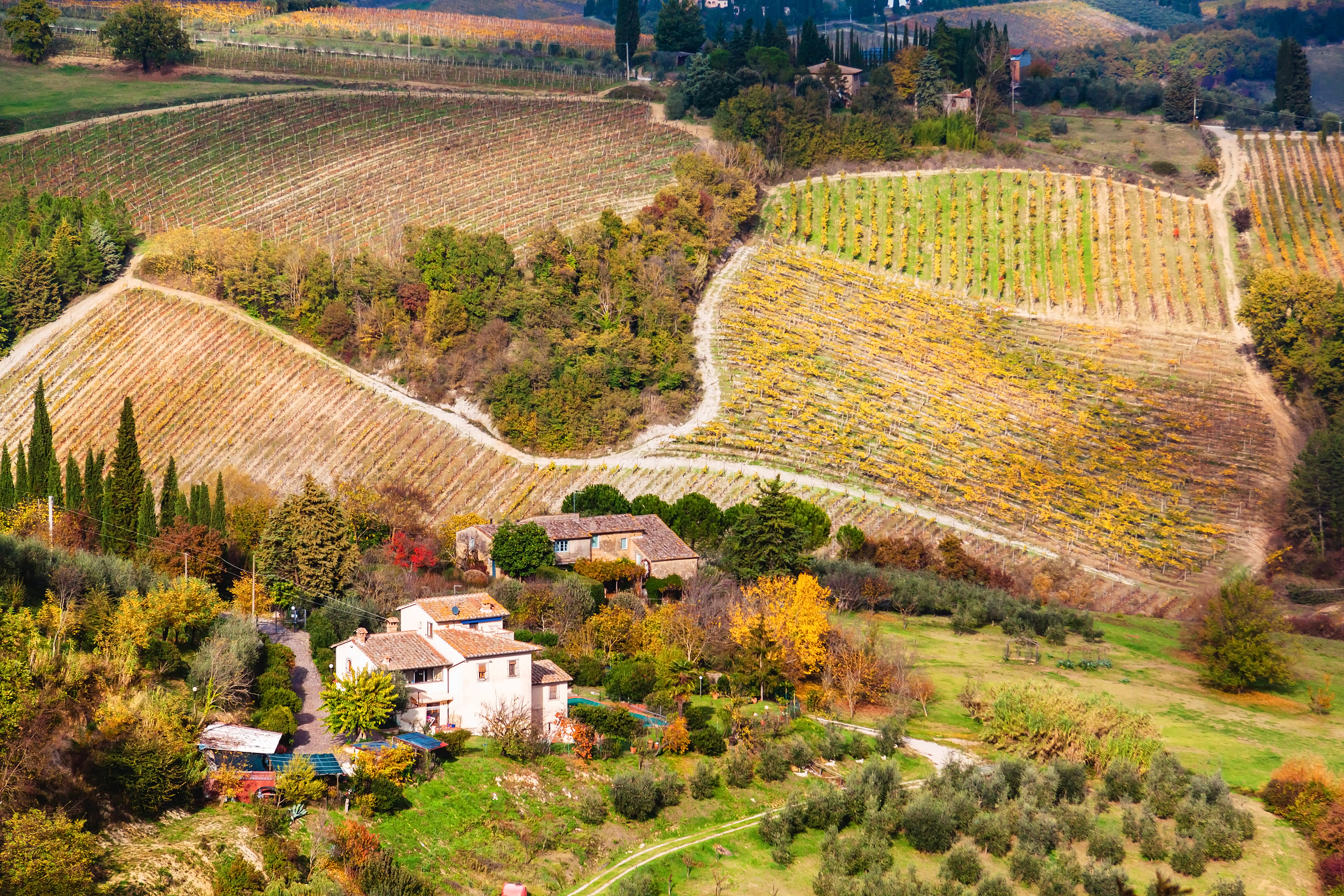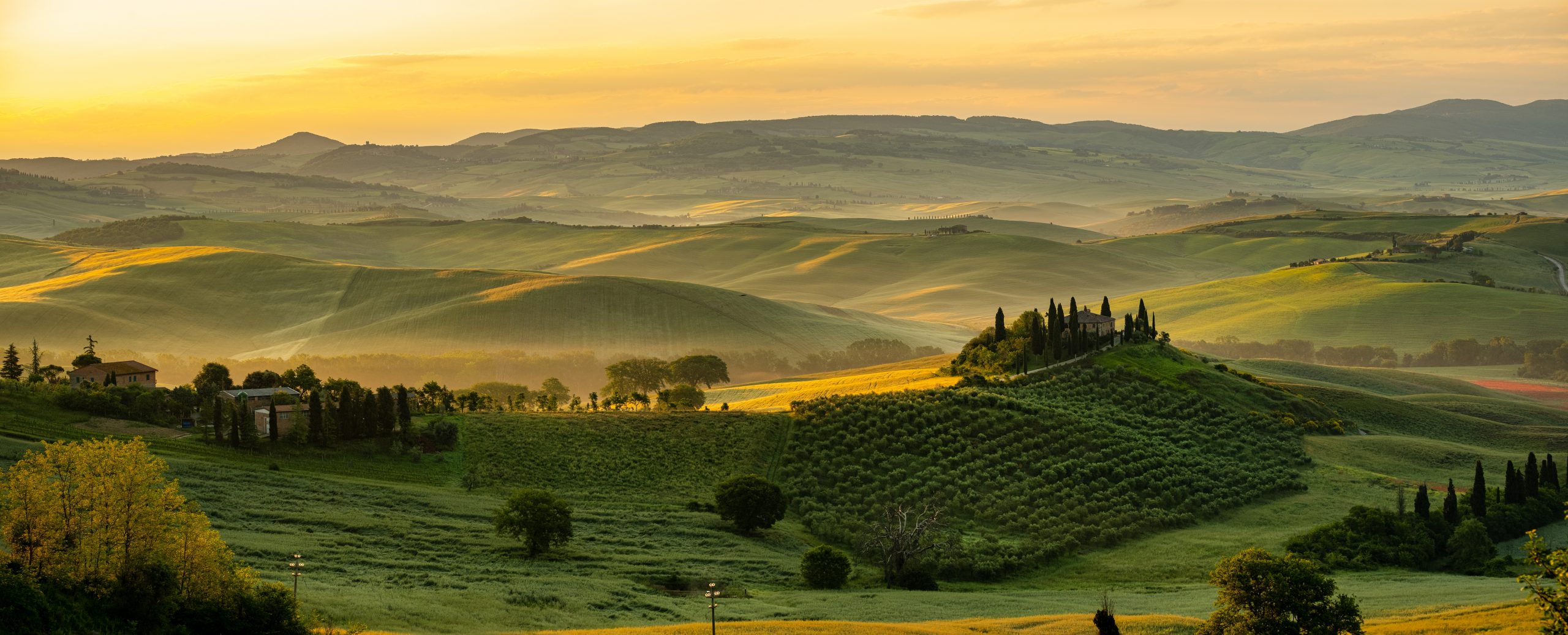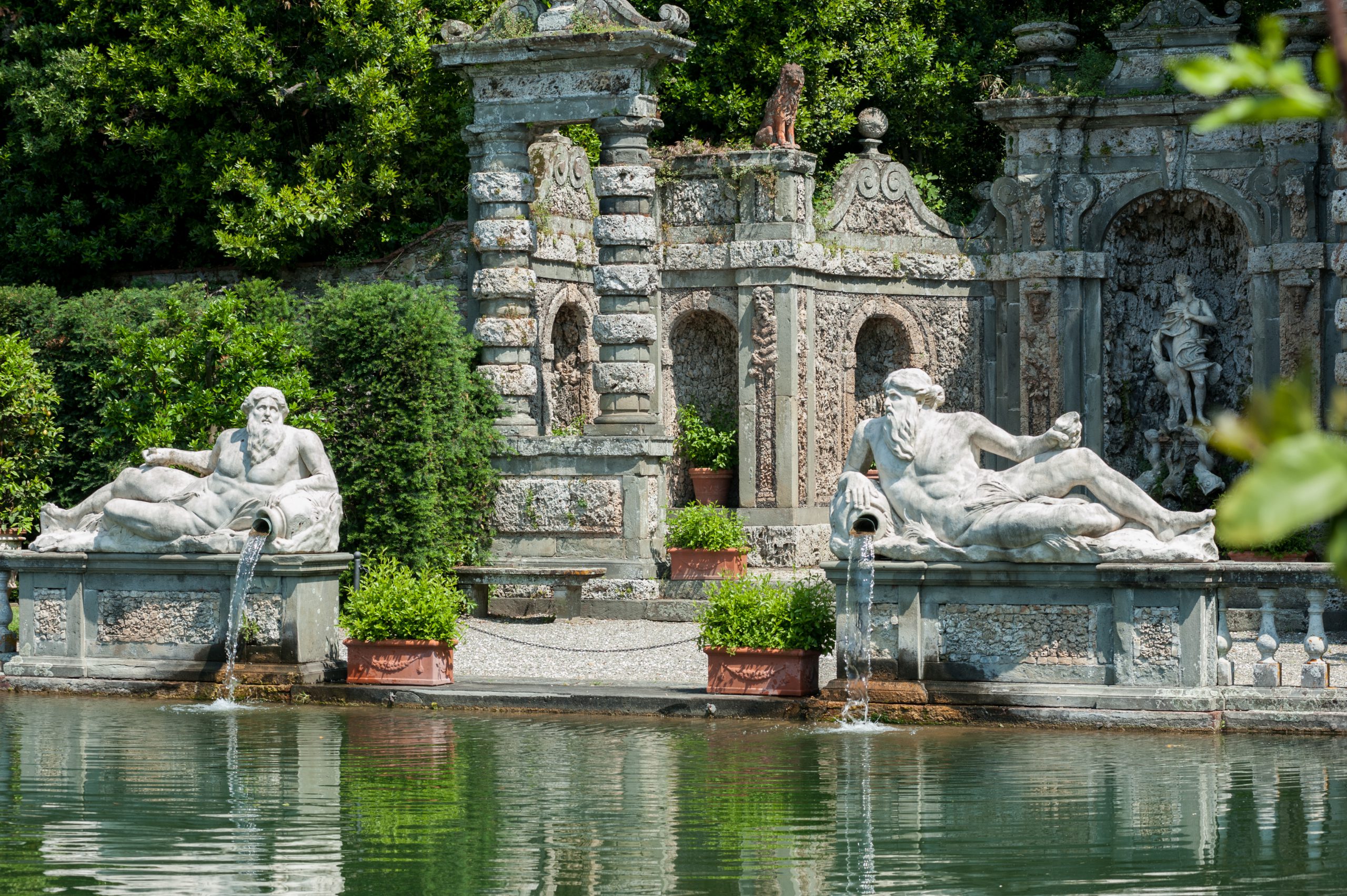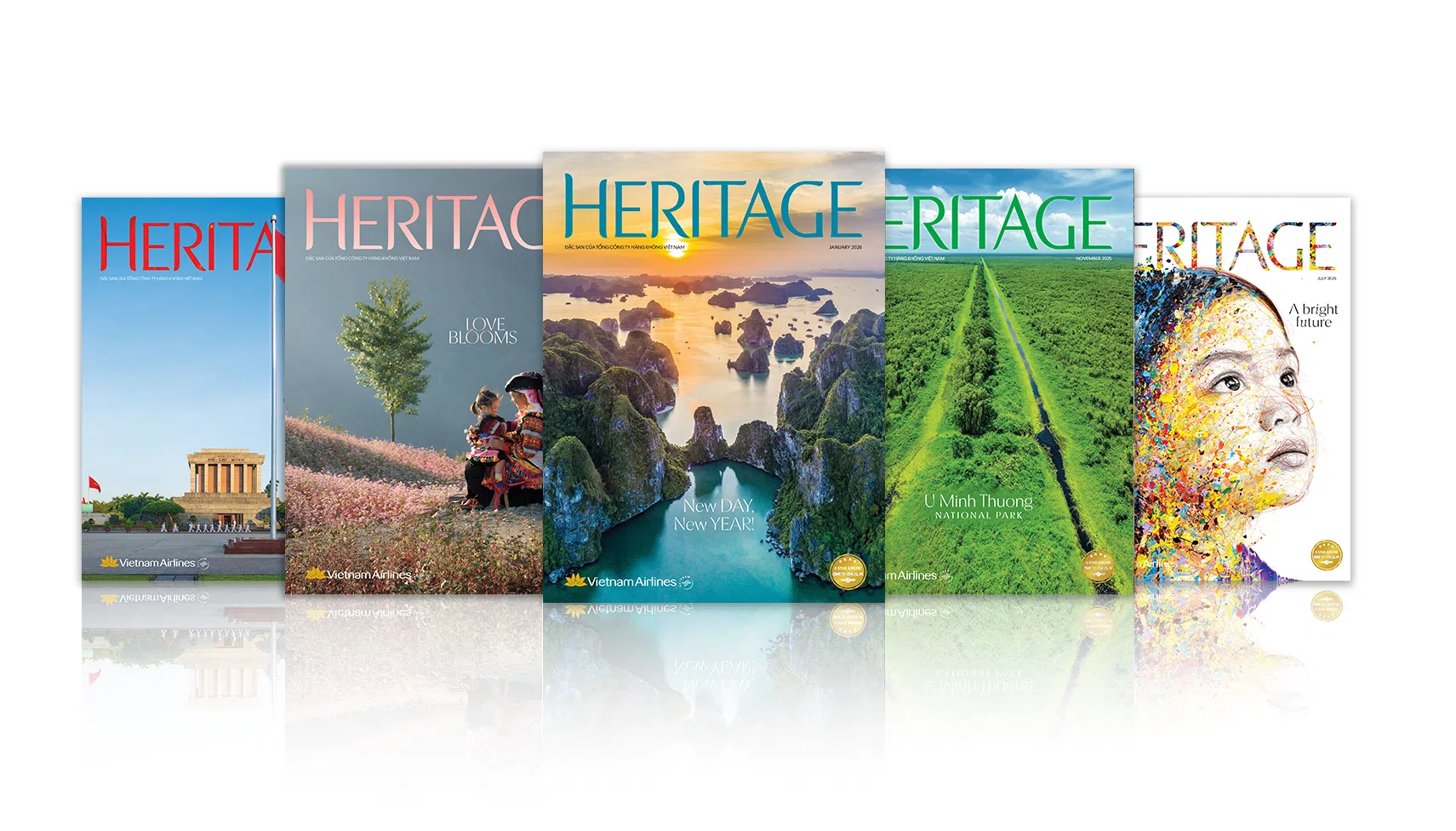Thuy Phuong
Discover the best of Italy in Tuscany’s ancient rural estates.

All ending in ‘a’, the words “Villa, Lucca, Toscana” seem to create an exclamation of delight – ‘Ah!’, for visitors arriving in the ancient city of Lucca. Known for its bell towers, palaces, churches, and fortresses, the Italian region of Tuscany also impresses 21st century travelers with its vast and captivating fields and rural estates.
Today, Lucca is a city in northwestern Tuscany, approximately 30km from Pisa and 80km from Florence. From the 14th to the 19th century, before the nation-state of Italy was established, places like Florence, Rome, and Venice were all independent city-states. Lucca, as a city-state, flourished in two main areas: silk trading and banking, which led to the rise of an elite class of merchant-scholars, who were adept at both business and literary pursuits, ranging from poetry and aesthetic arts to philosophy. Without these merchant-scholars, these rural estates would never have been created nor survived to this day.
Most visitors to Tuscany tour Pisa and Florence, while ancient cities like Lucca, Siena, and Pienza attract significantly fewer international visitors. However, that doesn’t make Lucca any less captivating. Often referred to as the ‘city of 99 churches’, visitors get the feeling that every corner or alleyway leads to a church or chapel. The most surprising aspect in a place that seemingly holds no surprises is that Lucca boasts unique countryside estates.

Estates as a stage of development
The estates of Lucca are a unique architectural ensemble, embodying a singular concept of the rural Tuscan landscape. The construction of these estates began in the 14th century, with transformations continuing until the 19th century. They have created distinct landscapes surrounding the heart of the city-state of Lucca.
From the 14th century, the nobility, bankers, and prominent merchants of Lucca began to purchase expansive hillsides and fertile valleys to construct agricultural estates. These places not only had to match the aesthetic standards of the palaces and mansions within the city but also had to serve as leisurely country retreats and provide additional supplies of food and grain.
Autumn is undoubtedly the most beautiful time of the year in Tuscany, with comfortable temperatures and less tourists. It is then that one can marvel at the stunning color palette of nature in its subtlest shades. The leaves in the gardens shift hues from fresh green and deep green through rich gold, to faded yellow to brick red, and reddish purple.
The autumn painting unfolds with golden sunlight and blue skies. Across the horizon lie undulating valleys covered in leaves of various colors. From a distance, the landscape is dotted with tall and short trees, slender pines towering overhead, and clusters of pine trees casting shadows, all interspersed with the golden and reddish roofs of grand mansions.
Looking closer, approaching the gates of one of these estates, one would be overwhelmed by its grandeur. The main wall is built from protruding stones, and the mansion rises behind a vast green lawn, surrounded by flower gardens, fruit gardens, an outdoor theater, a fountain, artificial caves, ponds, statues of humans and animals, plus other miniature wonders, all arranged in harmony. The front of the mansion faces a valley of olive trees, while the back leans into a vineyard. These two types of trees embody the spirit of Tuscany. Suppose you are sitting in a hot air balloon to admire the estate from above. Imagine a vertical axis connecting the two valleys like a necklace, with the main mansion as the diamond lying in the middle.
The architectural language of these estates embodies a theatrical essence, meaning they feature long avenues lined with towering trees, both framing the central perspective in the pastoral landscape painting and dictating the main paths. The high artistic and aesthetic value expressed in the architecture, interior design, and layout of these mansions doesn’t detract from their agricultural essence, meaning they are beautiful yet functional, a place for both enjoyment and labor.
More than just a localized architectural phenomenon, the Lucca estates deserve to be recognized as a milestone on the “trade route” (itinera mercatorum) that transported not just goods but also crafts, culture, and lifestyles, connecting Tuscany with Europe. For this reason, the Lucca estates are considered a manifestation of this continent’s “estate civilization”.

“Estate civilization”
Over many centuries, countless European artists, writers, and painters were enamored with these estates, and to this day, modern visitors cannot help but marvel at the intellect and craftsmanship of the architects and artisans who created these magnificent complexes.
During the Middle Ages, these estates served two equally significant functions: entertainment and agriculture. However, as the 17th and 18th centuries rolled around, the agricultural function was overshadowed by their role as luxurious retreats for the elite. The zenith of aesthetic appeal was achieved between the 16th and 17th centuries. Although architectural styles might have been changed, renovated, or even demolished with each successive owner, one constant remained over seven centuries (from the 14th to the 20th century): the intimate connection between man-made and natural elements within each estate. What’s truly fascinating is the juxtaposition of high architectural and artistic aesthetics set amidst pastoral farmlands.
In the 16th and 17th centuries, political stability and economic prosperity made Lucca a magnet for members of various groups and salons who engaged in philosophical, ideological, political, and religious discussions in a serene and relaxed setting. The estates of prestigious families such as Buonvisi, Mazzarosa, Parensi, Torrigiani, Santini, and Saminiati were graced by the footsteps of renowned figures like the humanist Ortensio Lando, poet Benedetto Varchi, and philosopher Montaigne. They immortalized this land in their celebrated works.
Shaping the architectural style and designing the most distinguished estates for the largest noble families of Lucca were two families of artisans, architects, and builders, who passed their skills from father to son: the Civitalis and Vincenzo in the 15th and 16th centuries. Architects, sculptors, and painters like Bartolomeo Ammannati, Giorgio Vasari, Francesco Marti, and Flaminio Saminiati also left their mark on these structures.
Currently, the city of Lucca preserves approximately 120 estates from the hundreds that existed in previous centuries. Today’s visitors can marvel at an architectural spectrum created over a span of time, ranging from rustic medieval-style estates to mansions influenced by Baroque, Rococo, and Neoclassical styles. The majority of these are privately owned, either by direct descendants of long-ago owners or by wealthy individuals who have acquired them more recently. Some estates maintain their opulent grandeur, while others show signs of decay, only echoing a ‘bygone glory’.
The estates in Lucca deserve their reputation as some of the most unique and picturesque rural landmarks in Europe, celebrated for many centuries.










